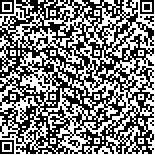| Quote
: |
戴思佳,张泓,张鹏,何可,游莹乔.头电针联合低频经颅重复磁刺激治疗脑梗死后Broca失语的临床研究[J].湖南中医药大学学报英文版,2023,43(10):1853-1857.[Click to copy
] |
|
| |
|
|
| This paper
:Browser 1943times Download 1105times |
| 头电针联合低频经颅重复磁刺激治疗脑梗死后Broca失语的临床研究 |
| 戴思佳,张泓,张鹏,何可,游莹乔 |
| (湖南中医药大学, 湖南 长沙 410208;湖南中医药大学第二附属医院, 湖南 长沙 410005;湖南中医药大学第一附属医院, 湖南 长沙 410007) |
| 摘要: |
| 目的 观察头电针联合低频经颅重复磁刺激(low frequency repetitive transcranial magnetic stimulation, LF-rTMS)治疗脑梗死后Broca失语的临床疗效。方法 将符合纳入标准的63例脑梗死后Broca失语患者用随机数字表法分为观察组(n=31)、对照组(n=32),每组30例完成所有结果评价。两组均予以临床对症支持治疗、语言康复训练及右侧大脑半球LF-rTMS治疗,观察组另行左侧大脑半球头电针治疗,对照组行左侧大脑半球头针治疗。治疗前后,均进行西方失语症成套测验(the Western aphasia battery, WAB)评分、中国式功能性言语沟通能力检查法(chinese functional communication profile, CFCP)评分及波士顿诊断性失语症检查(Boston diagnostic aphasia examination, BDAE)评级测试,并根据BDAE评级结果计算出显愈、显效和总有效率以判定临床疗效。结果 治疗6周后,观察组总有效率为96.67%,显著高于对照组的76.67%(P<0.05);两组患者的自发言语、听理解、复述、命名评分及言语沟通能力的评分均明显上升(P<0.05),且观察组高于对照组(P<0.05);两组患者的失语症等级皆提高(P<0.05),且观察组高于对照组(P<0.05)。结论 头电针联合LF-rTMS治疗脑梗死后Broca失语患者可有效改善其语言功能,值得临床推广应用。 |
| 关键词: 脑梗死 Broca失语 头电针 经颅重复磁刺激 语言功能 言语沟通能力 失语症等级 |
| DOI:10.3969/j.issn.1674-070X.2023.10.015 |
| Received:February 11, 2023 |
| 基金项目:湖南省科学技术厅临床医疗技术创新引导项目(2021SK51304)。 |
|
| Clinical study of head electroacupuncture combined with LF-rTMS in treating Broca aphasia after cerebral infarction |
| DAI Sijia,ZHANG Hong,ZHANG Peng,HE Ke,YOU Yingqiao |
| (Hunan University of Chinese Medicine, Changsha, Hunan 410208, China;The Second Hospital of Hunan University of Chinese Medicine, Changsha, Hunan 410005, China;The First Hospital of Hunan University of Chinese Medicine, Changsha, Hunan 410007, China) |
| Abstract: |
| Objective To observe the clinical efficacy of head electroacupuncture combined with low frequency repetitive transcranial magnetic stimulation (LF-rTMS) in treating Broca aphasia after cerebral infarction. Methods A total of 63 Broca aphasia patients who met the inclusion criteria were divided into observation group (n=31) and control group (n=32) by random number table method. Thirty patients in each group completed all results evaluations. Both groups were given clinical symptomatic supportive treatment, language rehabilitation training, and LF-rTMS treatment in the right cerebral hemisphere. In addition, the observation group received head electroacupuncture treatment in the left cerebral hemisphere, while the control group was administered head acupuncture in the left cerebral hemisphere. Before and after the treatment, the Western aphasia battery (WAB) score, Chinese functional communication profile (CFCP) score were tested, and Boston diagnostic aphasia examination (BDAE) was used to rate aphasia degree. Besides, the significant recovery rate, the significant effective rate, and the total effective rate were calculated to determine the clinical efficacy according to the BDAE rating results. Results After 6 weeks of treatment, the total effective rate in observation group was 96.67%, significantly higher than that of control group (76.67%) (P<0.05); the scores of spontaneous speech, auditory comprehension, retelling, naming, and verbal communication ability of patients in both groups increased significantly (P<0.05), with observation group increased higher than control group (P<0.05); the aphasia grade in patients of both groups increased (P<0.05), with observation group showing higher increase than control group (P<0.05). Conclusion In treating the patients with Broca aphasia after cerebral infarction, head electroacupuncture combined with LF-rTMS can effectively improve their language function, which is worthy of clinical promotion and application. |
| Key words: cerebral infarction Broca aphasia head electroacupuncture repetitive transcranial magnetic stimulation language function verbal communication ability aphasia grade |
|

二维码(扫一下试试看!) |
|
|
|
|


